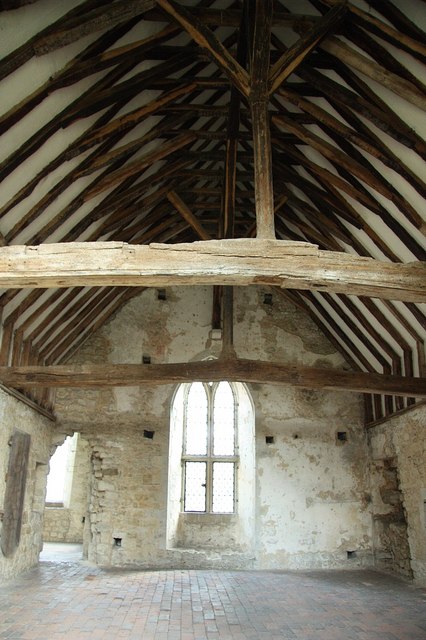|
Top Plate
A plate or wall plate is a horizontal, structural, load-bearing member in wooden building framing. Timber framing A plate in timber framing is "A piece of Timber upon which some considerable weight is framed...Hence Ground-Plate...Window-plate [obsolete]..." etc. Also called a wall plate, raising plate,Sturgis, Russell. ''Sturgis' illustrated dictionary of architecture and building: an unabridged reprint of the 1901-2 edition''. 1901. Reprint. Mineola, N.Y.: Dover, 1989. 159. Print. or top plate,Sherwood, Gerald E., and Robert C. Stroh. ''Wood-frame house construction''. Washington, D.C.: U.S. Dept. of Agriculture, Forest Service :, 1989. 54. Print. An exception to the use of the term plate for a large, load-bearing timber in a wall is the bressummer, a timber supporting a wall over a wall opening (see also: Lintel (architecture), lintel). These are common in Australia. The terms sole plate or sill plate are used for the members at the bottom of a wall at the foundation but ar ... [...More Info...] [...Related Items...] OR: [Wikipedia] [Google] [Baidu] |
Timber Framing
Timber framing () and "post-and-beam" construction are traditional methods of building with heavy Beam (structure), timbers, creating structures using squared-off and carefully fitted and Woodworking joints, joined timbers with joints secured by large wooden pegs. If the Structural system, structural frame of Load-bearing wall, load-bearing timber is left exposed on the exterior of the building it may be referred to as half-timbered, and in many cases the infill between timbers will be used for decorative effect. The country most known for this kind of architecture is Germany, where timber-framed houses are spread all over the country. The method comes from working directly from logs and trees rather than pre-cut Lumber#Dimensional lumber, dimensional lumber. Artisans or framers would gradually assemble a building by hewing logs or trees with broadaxes, adzes, and draw knife, draw knives and by using woodworking tools, such as hand-powered Brace (tool), braces and Auger (dril ... [...More Info...] [...Related Items...] OR: [Wikipedia] [Google] [Baidu] |
Bressummer
A bressummer, breastsummer, summer beam (somier, sommier, sommer, somer, cross-somer, summer, summier, summer-tree, or dorman, dormant tree) is a load-bearing beam in a timber-framed building. The word ''summer'' derived from sumpter or French sommier, "a pack horse", meaning "bearing great burden or weight". "To support a superincumbent wall", "any beast of burden", and in this way is similar to a wall plate. The use and definition of these terms vary but generally a bressummer is a jetty sill and a summer is an interior beam supporting ceiling joists, see below: * (UK) In the outward part of the building, and the middle floors (not in the garrets or ground floors) into which the girders are framed. In the inner parts of a building, such beams are called "summers". It is part of the timber-frame construction in the overhanging upper story in jettying. * (UK) "Horizontal beam over a fireplace opening (alternatively ''lintel'', mantel beam), or set forward from the lower p ... [...More Info...] [...Related Items...] OR: [Wikipedia] [Google] [Baidu] |
Lintel (architecture)
A lintel or lintol is a type of Beam (structure), beam (a horizontal structural element) that spans openings such as Portal (architecture), portals, doors, windows and fireplaces. It can be a decorative architectural element, or a combined ornamented/structural item. In the case of windows, the bottom span is referred to as a window sill, sill, but, unlike a lintel, does not serve to bear a load to ensure the integrity of the wall. Modern-day lintels may be made using prestressed concrete and are also referred to as beams in beam and block, beam-and-block slabs or as ribs in rib-and-block slabs. These prestressed concrete lintels and blocks can serve as components that are packed together and propped to form a wiktionary:Suspended, suspended-floor concrete slab. An arch functions as a curved lintel. Structural uses In worldwide architecture of different eras and many cultures, a lintel has been an element of post and lintel construction. Many different building materials have ... [...More Info...] [...Related Items...] OR: [Wikipedia] [Google] [Baidu] |
Sill Plate
A sill plate or sole plate in construction and architecture is the bottom horizontal member of a wall or building to which vertical members are attached. The word "plate" is typically omitted in America and carpenters speak simply of the "sill". Other names are rat sill, ground plate, ground sill, groundsel, night plate, and midnight sill. Sill plates are usually composed of lumber but can be any material. The timber at the top of a wall is often called a top plate, pole plate, mudsill, wall plate or simply "the plate". Timber sills In historic buildings the sills were almost always large, solid timbers framed together at the corners, carry the Bent (structural), bents, and are set on the stone or brick foundation walls, Pier (architecture), piers, or piles (wood posts driven or set into the ground). The sill typically carries the wall framing (posts and studs) and floor joists. There are rare examples of historic buildings in the U.S. where the floor joists land on the founda ... [...More Info...] [...Related Items...] OR: [Wikipedia] [Google] [Baidu] |
Purlin
A purlin (or historically purline, purloyne, purling, perling) is a longitudinal, horizontal, structural member in a roof. In traditional timber framing there are three basic types of purlin: purlin plate, principal purlin, and common purlin. Purlins also appear in steel frame construction. Steel purlins may be painted or greased for protection from the environment. Etymology Information on the origin of the term "purlin" is scant. The Oxford Dictionary suggests a French origin, with the earliest quote using a variation of ''purlin'' in 1447, though the accuracy of this claim has been disputed. In wood construction Purlin plate A purlin plate in wood construction is also called an "arcade plate" in European English, "under purlin", and "principal purlin". The term plate means a major, horizontal, supporting timber. Purlin plates are beams which support the mid-span of rafter A rafter is one of a series of sloped structural members such as Beam (structure), steel beam ... [...More Info...] [...Related Items...] OR: [Wikipedia] [Google] [Baidu] |
Crown Post
A crown post is a term in traditional timber framing for a post in roof framing which stands on a '' tie beam'' or '' collar beam'' and supports a ''collar plate''.Alcock, N. W.. Recording timber-framed buildings: an illustrated glossary. London: Council for British Archaeology, 1989. G5 Historically, crown posts were called king posts, but this usage is confusing and obsolete. A crown post is designed to be in a compression and transfers weight to the tie beam, where a king post is designed to be in tension and supports the tie beam. In the U.K a ''crown strut'' is similar to a crown post but does not carry a plate. Historical Context The use of crown post roofs became prominent in medieval England, particularly during the late medieval period. These roofs were commonly found in high-status buildings such as manor houses and large farm structures, where they provided both structural support and aesthetic appeal. One of the most famous examples is the crown post roof at Old ... [...More Info...] [...Related Items...] OR: [Wikipedia] [Google] [Baidu] |
Sill Plate
A sill plate or sole plate in construction and architecture is the bottom horizontal member of a wall or building to which vertical members are attached. The word "plate" is typically omitted in America and carpenters speak simply of the "sill". Other names are rat sill, ground plate, ground sill, groundsel, night plate, and midnight sill. Sill plates are usually composed of lumber but can be any material. The timber at the top of a wall is often called a top plate, pole plate, mudsill, wall plate or simply "the plate". Timber sills In historic buildings the sills were almost always large, solid timbers framed together at the corners, carry the Bent (structural), bents, and are set on the stone or brick foundation walls, Pier (architecture), piers, or piles (wood posts driven or set into the ground). The sill typically carries the wall framing (posts and studs) and floor joists. There are rare examples of historic buildings in the U.S. where the floor joists land on the founda ... [...More Info...] [...Related Items...] OR: [Wikipedia] [Google] [Baidu] |
Anchor Bolt
Anchor bolts are used to connect structural and non-structural elements to concrete.. The connection can be made by a variety of different components: anchor bolts (also named fasteners), steel plates, or stiffeners. Anchor bolts transfer different types of load: tension forces and shear forces. A connection between structural elements can be represented by steel columns attached to a reinforced concrete foundation. A common case of a non-structural element attached to a structural one is the connection between a facade system and a reinforced concrete wall. Types Cast-in-place The simplest – and strongest – form of anchor bolt is cast-in-place, with its embedded end consisting of a standard hexagonal head bolt and washer, 90-bend, or some sort of forged or welded flange (see also stud welding). The last are used in concrete-steel composite structures as shear connectors. Other uses include anchoring machines to poured concrete floors and buildings to their ... [...More Info...] [...Related Items...] OR: [Wikipedia] [Google] [Baidu] |
Platform (construction)
Framing, in construction, is the fitting together of pieces to give a structure, particularly a building, support and shape. Framing materials are usually wood, engineered wood, or structural steel. The alternative to framed construction is generally called ''mass wall'' construction, where horizontal layers of stacked materials such as log building, masonry, rammed earth, adobe, etc. are used without framing. Building framing is divided into two broad categories, heavy-frame construction (heavy framing) if the vertical supports are few and heavy such as in timber framing, pole building framing, or steel framing; or light-frame construction (light-framing) if the supports are more numerous and smaller, such as balloon, platform, light-steel framing and pre-built framing. Light-frame construction using standardized dimensional lumber has become the dominant construction method in North America and Australia due to the economy of the method; use of minimal structural ma ... [...More Info...] [...Related Items...] OR: [Wikipedia] [Google] [Baidu] |
Architectural Elements
:''The following Outline (list), outline is an overview and topical guide to architecture:'' Architecture – the process and the product of designing and constructing buildings. Architectural works with a certain indefinable combination of design quality and external circumstances may become cultural symbols and / or be considered works of art. What type of thing is architecture? Architecture can be described as all of the following: * Academic discipline – focused study in one academic field or profession. A discipline incorporates expertise, people, projects, communities, challenges, studies, inquiry, and research areas that are strongly associated with the given discipline. * Buildings – buildings and similar structures, the product of architecture, are referred to as architecture. * One of the arts – as an art form, architecture is an outlet of human expression, that is usually influenced by culture and which in turn helps to change culture. Archit ... [...More Info...] [...Related Items...] OR: [Wikipedia] [Google] [Baidu] |
Building
A building or edifice is an enclosed Structure#Load-bearing, structure with a roof, walls and window, windows, usually standing permanently in one place, such as a house or factory. Buildings come in a variety of sizes, shapes, and functions, and have been adapted throughout history for numerous factors, from building materials available, to weather conditions, land prices, ground conditions, specific uses, monument, prestige, and aesthetic reasons. To better understand the concept, see ''Nonbuilding structure'' for contrast. Buildings serve several societal needs – occupancy, primarily as shelter from weather, security, living space, privacy, to store belongings, and to comfortably live and work. A building as a shelter represents a physical separation of the :Human habitats, human habitat (a place of comfort and safety) from the ''outside'' (a place that may be harsh and harmful at times). buildings have been objects or canvasses of much architecture, artistic expression. ... [...More Info...] [...Related Items...] OR: [Wikipedia] [Google] [Baidu] |








